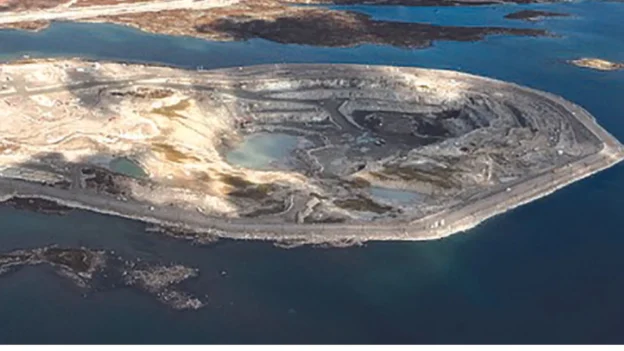Rio Tinto completed construction of a solar plant at its Diavik diamond mine, located in Canada’s Northwest Territories. This plant is the largest off-grid plant in the region and will mark a breakthrough in renewable energy generation in the north of the country.
The new installation, with 6,620 solar panels, will generate approximately 4.2 million kilowatt-hours per year, which will reduce diesel consumption by one million liters per year. This will also reduce greenhouse gas emissions by 2,900 tons ofCO2 equivalent, equivalent to taking 630 cars off the road each year.
Energy efficiency at Diavik
During the mine closure work, the solar plant will be solar plant plant will provide up to 25% of the electricity needed. Commercial production at Diavik is scheduled to end in 2026 and shutdown will extend to 2029. The installed bifacial panels take advantage of both direct sunlight and sunlight reflected by the snow, maximizing energy efficiency.
This solar project complements the wind power plant at Diavik, which has been in operation since 2012. The wind plant is the largest in northern Canada and has generated more than 195 million kilowatt-hours of electricity since its activation.
Project financing for the Rio Tinto solar power plant
The project received 3.3 million Canadian dollars from the Northwest Territories Government’s GHG Reduction Investment Grant Program. It is the first project to benefit from this funding, which is derived from a portion of the carbon tax paid by large emitters such as Diavik.
Construction began in February 2024, under contract with Solvest Inc. Solvest Inc. and Tłıchǫ Investment Corporation. Approximately 30% of the workforce came from the Tłıchǫ community, highlighting collaboration with local communities.
Rio Tinto continues to make progress on its global decarbonization initiatives, aiming to reduce its Scope 1 and 2 GHG emissions by 50% by 2030 and achieve net zero emissions by 2050.
Follow us on social networks and don’t miss any of our publications!
YouTube LinkedIn Facebook Instagram X
Source: riotinto
Photo: emj

